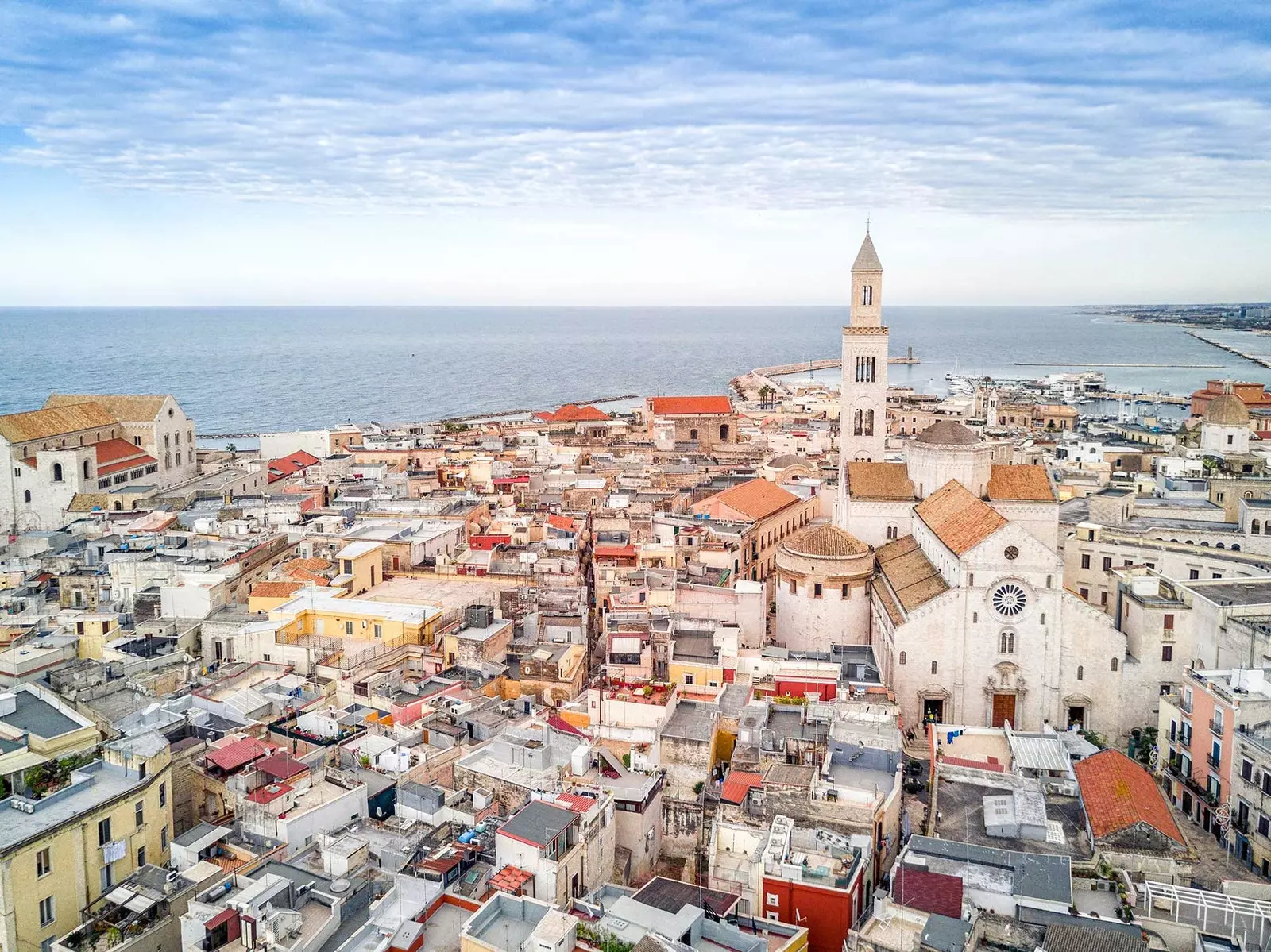
The city of Bari has some of the best architectural gems in Apulia.
Who was going to tell you now that the home of Santa Claus is not under the conifers of the Lappish taiga, but washed by the waves of the Adriatic; the story of the tall white-bearded man who comes on his horse loaded with gifts for all the children of the world begins in Bari, the capital of Puglia.
However, before continuing, the visitor must be warned that, before making any kind of judgment about the city that he is about to discover, he must avoid and avoid the modern expansion that opens to the south of Corso Vittorio Emmanuele. Bland and crowded with traffic, the modern Bari of grid streets and buildings of questionable building quality It works as an opaque wrapping for the gift that it hides once the initial shock is over: the aged Bari, Bari Vecchia.
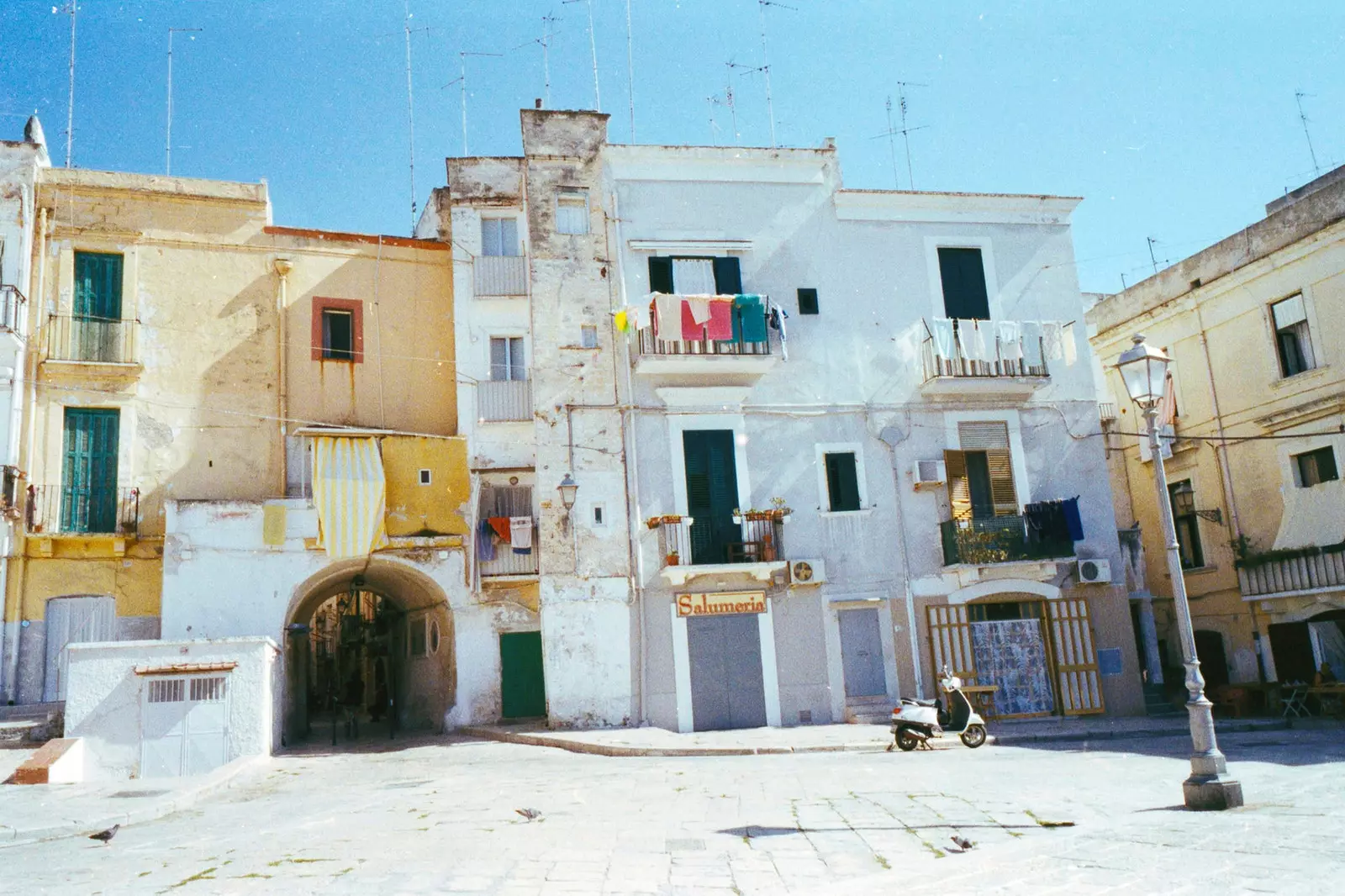
Bari, all the charm of Puglia
This corner of the capital of Apulia can be accessed through several open doors in the wall, or between worn buildings. One “Roman-style” option is to do it through a branch of the Via Appia Traiana , which goes into the city along the southeast coast, and ends at the foot of the old port. The safe natural shelter offered by the southern cove of the peninsula on which Bari Vecchia sits has been the cause of its fortune, but also of numerous misfortunes.
Now, on its waters sits the Teatro Margherita , the only one in Europe to rest on stilts. Before us is presented the first paradox of a city, and a country, Italy, full of them; where a representative of the art and culture, bloody battles took place for control of the port, the same one on which exhibitions are now exhibited (the Teatro Margherita has housed the Museum of Contemporary Art of Bari since 2009) . What was always the cause of such struggles? The privileged maritime location of the city, considered for centuries as "the door of the East".
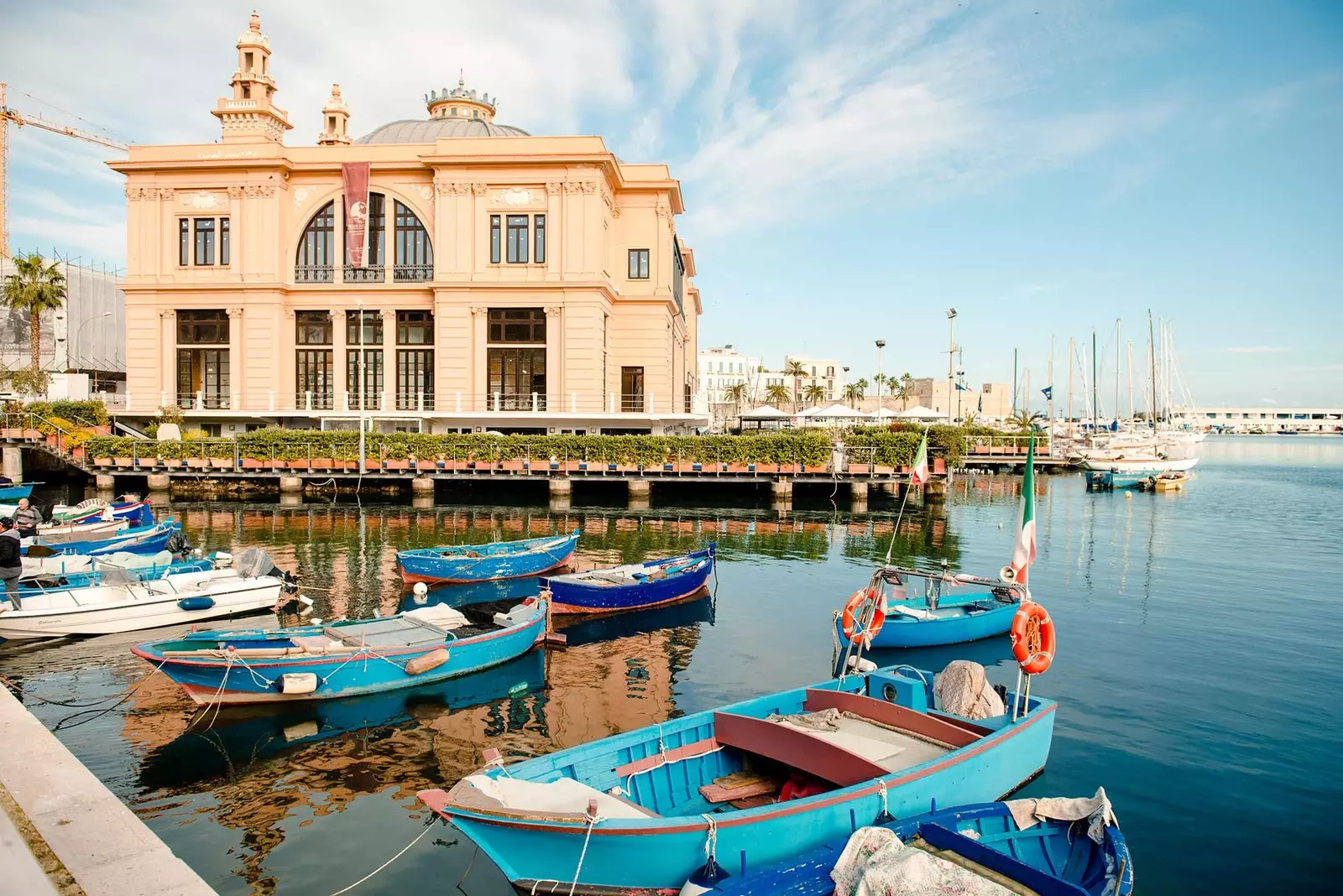
The Teatro Margherita is proof that not only does Bari live by history, but that it is also a source of art and culture.
Bari is an Adriatic city, but it looks to the Aegean like the son to the father, and the poor to the rich; from there would come the relics, the spices, the riches, the ships and the men that would make Bari a desired and invaded city both by Byzantines, Normans, Italian dukes and German emperors, as well as by the kings of Spain, France, and the sultans of Istanbul.
The presence of such illustrious towns among the cobbled streets of Bari Vecchia can be felt from the architecture of ancient palaces and hidden churches, even in the local gastronomy, full of nods to oriental flavors. The white stone of Apulia serves as a pictorial shield against the Mediterranean sun that crosses the famous sky of the heel of Italy without clouds that cross its path.
This is not the case when strolling through Bari Vecchia, which offers the passer-by a labyrinthine layout, intact heritage of its Islamic architecture . The interior patios of the houses are brimming with life, and while the children play among the geraniums, jasmine and bougainvillea, the nonne work on long wooden tables to make the coquettish orecchiette , a type of pasta shaped like a child's ear.
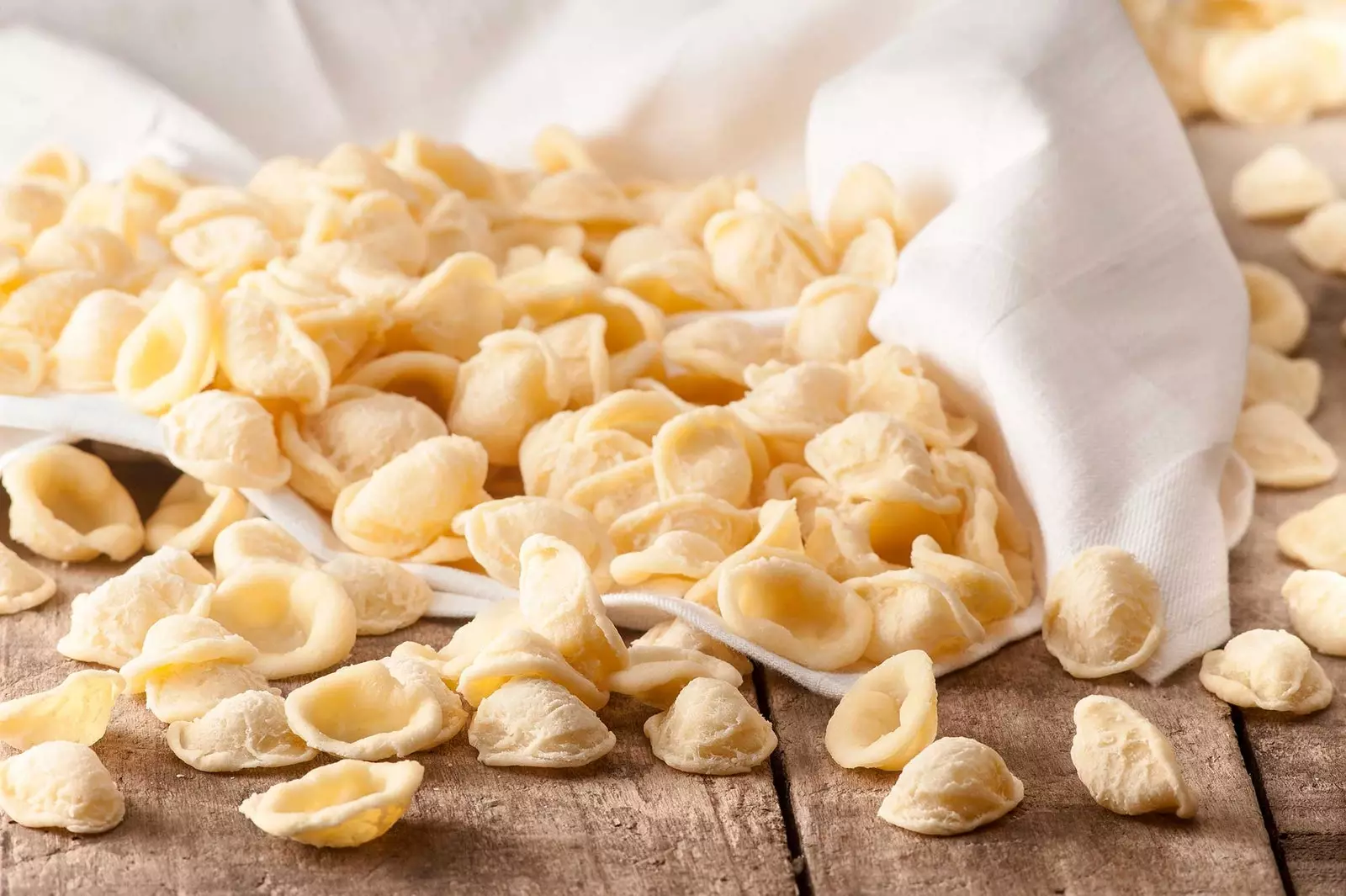
Orecchiette are a typical Apulian pasta that mimics the shape of an ear, hence its name
And so, while we only think about eating, we come across the coquette Church of San Marco of the Venetians, in the middle of the medieval center . The connection between Bari and the city of the lagoon dates back to the year 1002, when the Venetians appeared to free the bars from a prolonged Muslim siege. Since then, the friendship was to more, and the Venetian sailors found in Apulia something that the Bari sailors already used on their sea voyages: the aforementioned orecchiette .
Thanks to this paste, the first of which there are records (the "ears" are already mentioned in documents from the 12th century), the sailors of Bari had secured a cheap, durable and substantial ranch for their crews, and could afford to sail to places as far away as Look (modern Demre, Turkey). Bari sailors arrived in this Turkish city in 1087 carrying the first of the gifts that would make Bari famous throughout Europe. After closing their businesses in Mira, they returned to their homeland carrying with them the relics of the revered Saint Nicholas.
Like a gift from the sea to the city, the bones of the saint (which in the countries of Orthodox tradition is the one in charge of delivering the Christmas presents) rest by the Mediterranean, in the place where the oxen that dragged them decided to stop their steps. While I hold a delicious nocciola ice cream in front of the white facade of the basilica, between sweet tongues, I contemplate the beautiful statues of these same oxen that watch over the visitors in the shade of the semicircular arches.
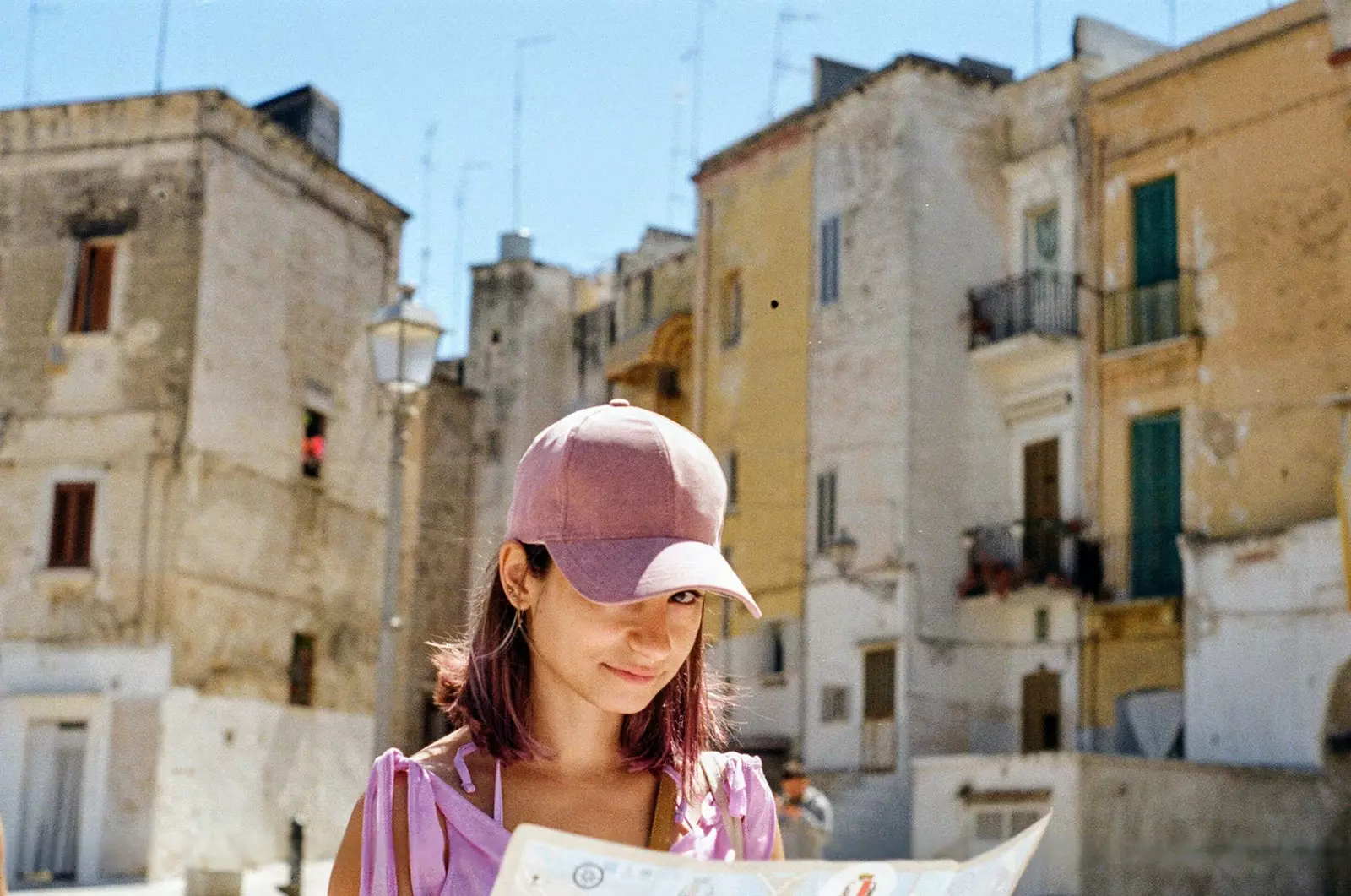
The capital of Apulia, crossroads of cultures
The Basilica of Saint Nicholas It is a gift for the eyes: it saves the best samples of sculpture of the elegant Romanesque pullés , and its own architecture, which retains the appearance of a fortress it had in Byzantine times, also has a strong North European imprint. The towers that flank its façade, tall and sturdy, seem like a present from distant Normandy. These are some of the gifts that some and other towns left in Bari, as are the warm sun that encourages you to walk, and the blue sea that invites you to swim.
Before the construction of the road that runs along the city walls, the waves lapped at the apse of the basilica of Saint Nicholas , but today, from its majestic interior, the incessant murmur of the waves can still be heard. That's why, sweaty, and still dazed by what I've seen so far, I rush through the alleys in search of a beach, a groyne , or a haven of water where you can taste the refreshing Mediterranean.
Walk under the arcades of the baroque palaces, signature of the illustrious potentates of the Spanish monarchy who made their fortune in Apulia while dodging crowded tables and sweaty waiters. At night, these same terraces that overlook the sea, as well as the garden patios hidden between small squares, will be full of elegant strollers eager to relieve thirsty throats with cold beer and dry amaro.
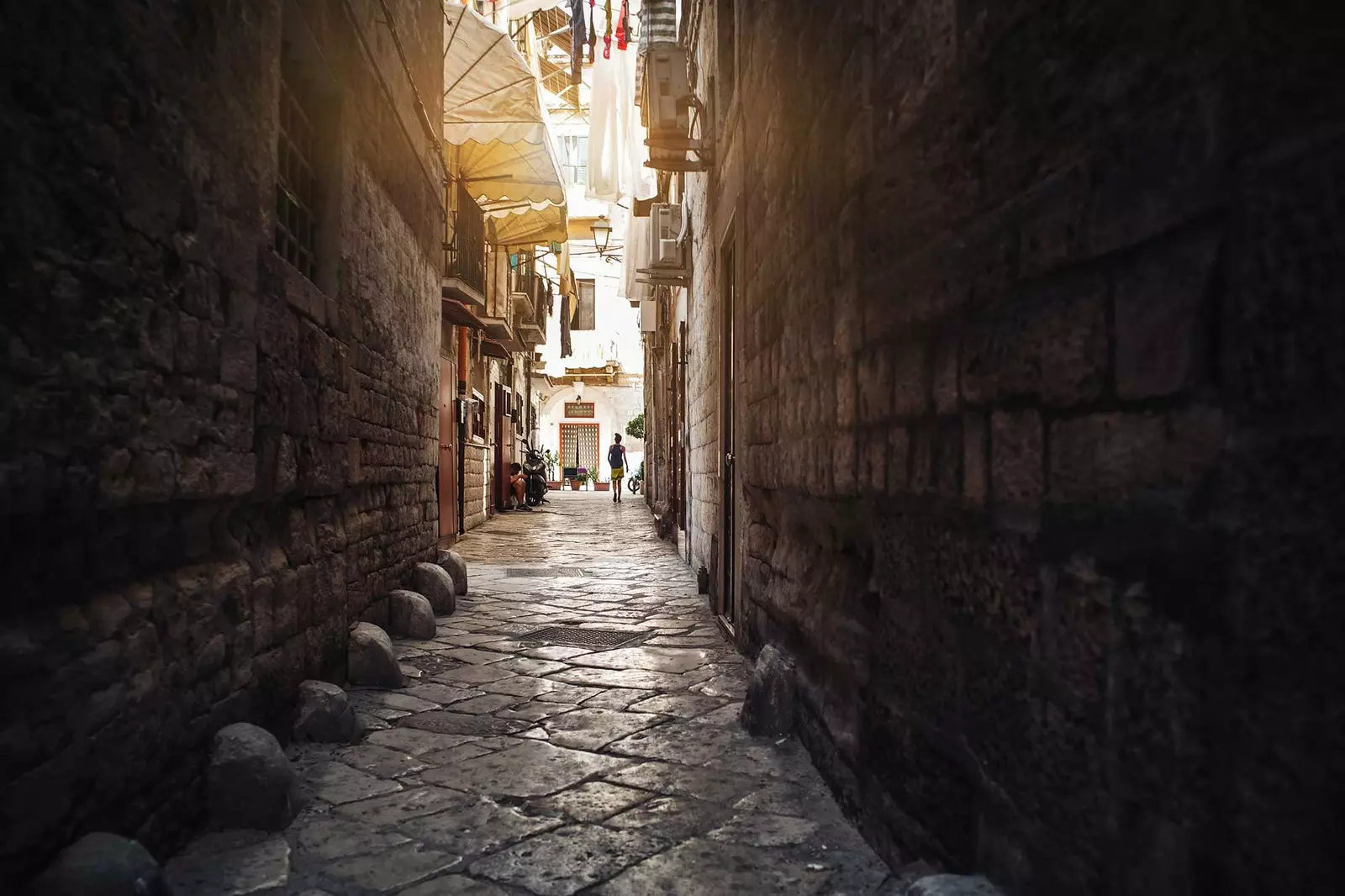
Getting lost in the streets of Bari is one of the best plans.
Later I could check how the night of Bari Vecchia does not vibrate, but breathes, like an old fisherman on a calm night , overlooking the port boardwalk. I have seen gifts for taste, sight, touch and hearing, but it seems that Bari is reluctant to offer me the dip I am looking for.
The battlements of the Norman castle urge me to turn menacingly, and I face the wide pier that overlooks the Adriatic, looking for cracks. “Bari doesn't have a beach, because it doesn't need one”, Gaetano explains to me, a man in his sixties with white hair on his chest, who walks half-naked along the city's boardwalk. Seeing my face beaded with sweat, he points me to a stall hidden under the shade of palm trees, and he points out that they sell the best yogurt shake in town, cold as ice.
Finding the best of Greece in Italy makes up for not finding a cove , I tell myself as I taste the gift that Bari offers me in the shadow of the walls. Suddenly, I smell again the smell of squid with onions and fresh basil. My stomach growls, relieved: Christmas, in Bari, never ends.
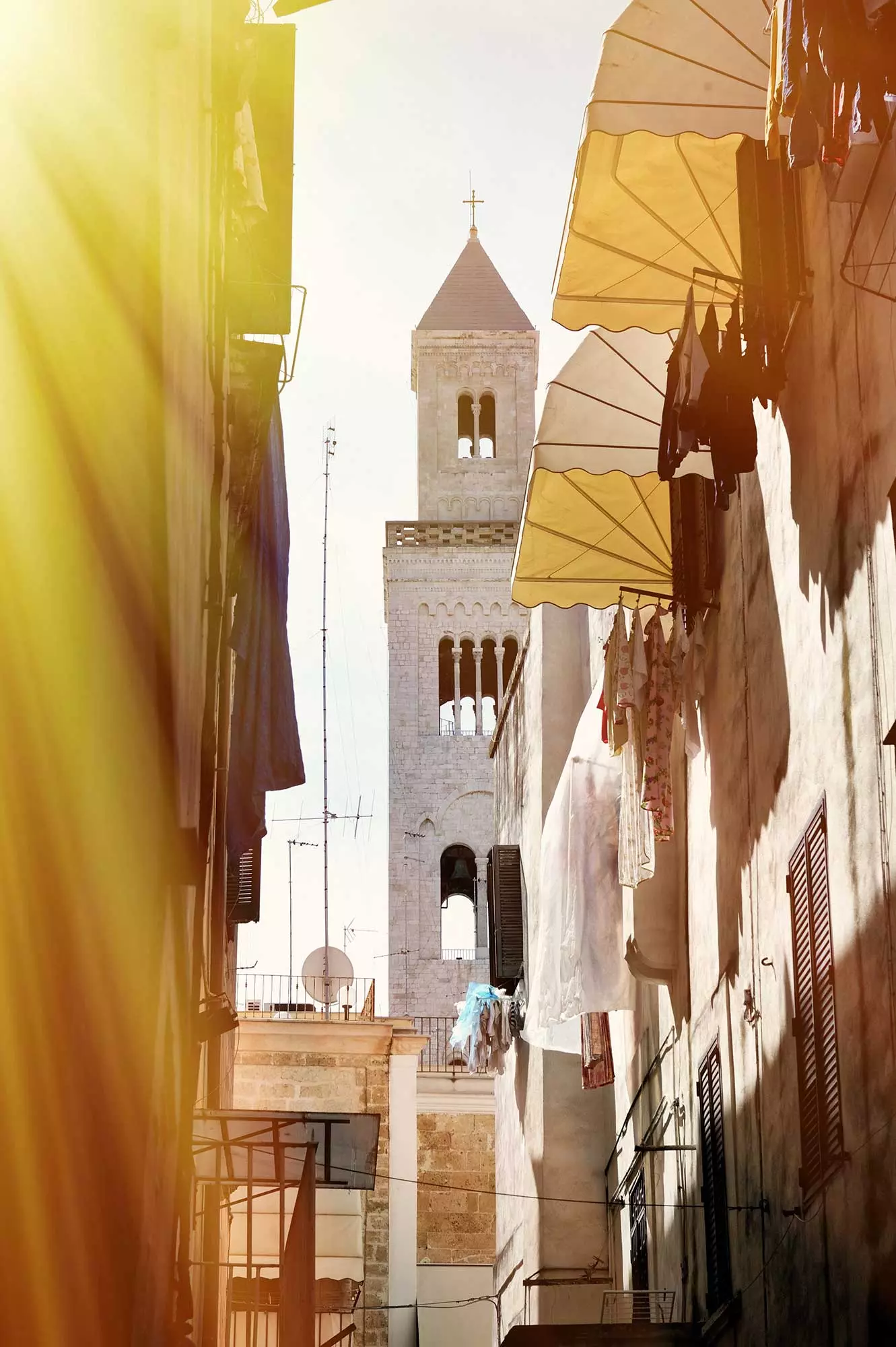
Bari Vecchia is the treasure that is hidden in the heart of modern Bari.
